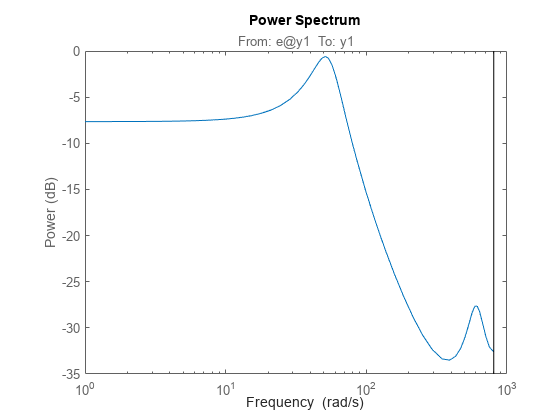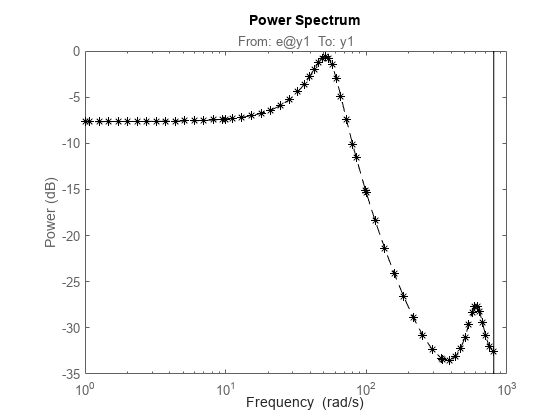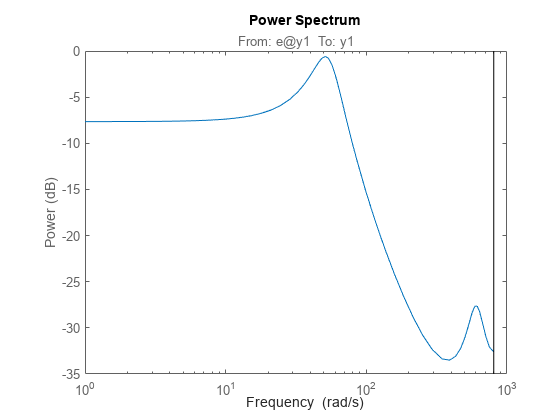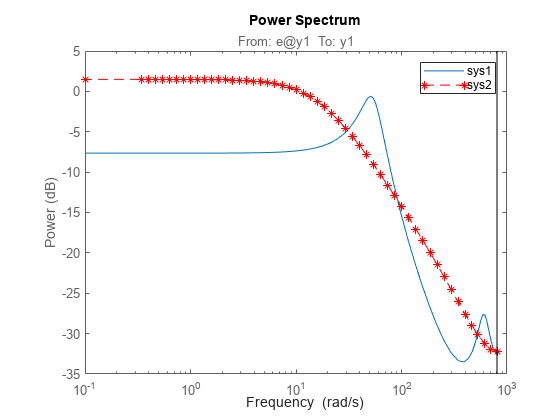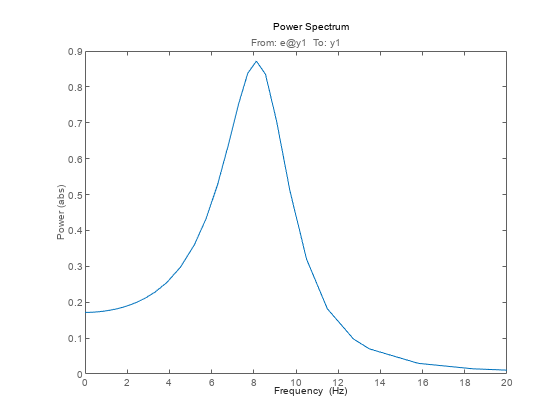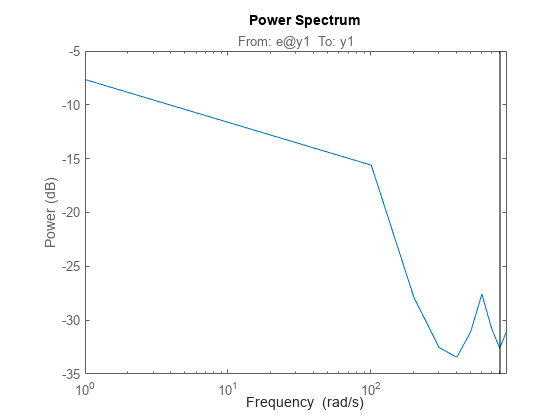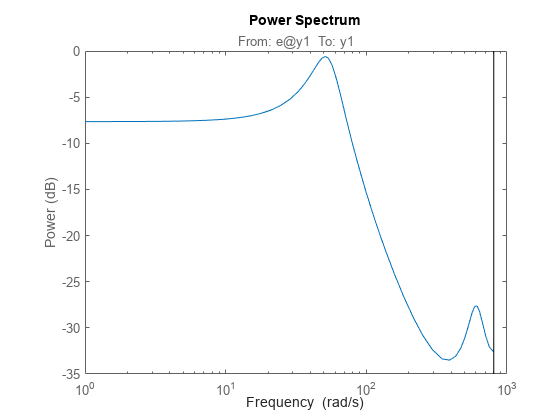spectrumplot
Plot disturbance spectrum of linear identified models
Syntax
Description
spectrumplot( plots the disturbance
spectrum of the model, sys)sys. The software chooses the number of points
on the plot and the plot frequency range.
spectrumplot(sys1,line_spec1,...,sysN,line_specN) plots the
disturbance spectrum for one or more models on the same axes.
You can mix sys, line_spec pairs with
sys models as in
spectrumplot(sys1,sys2,line_spec2,sys3).
spectrumplot automatically chooses colors and line styles in the order
specified by the ColorOrder and LineStyleOrder
properties of the current axes.
spectrumplot( plots into
the axes with handle ax,___)ax. All input arguments described for the previous
syntaxes also apply here.
spectrumplot(___,
uses plot_options to specify options such as plot title, frequency units, etc. All input
arguments described for the previous syntaxes also apply here.plot_options)
Examples
Input Arguments
Output Arguments
Version History
Introduced in R2012b
See Also
spectrum | spectrumoptions | getoptions | setoptions | showConfidence | Axes Properties | Line Properties
